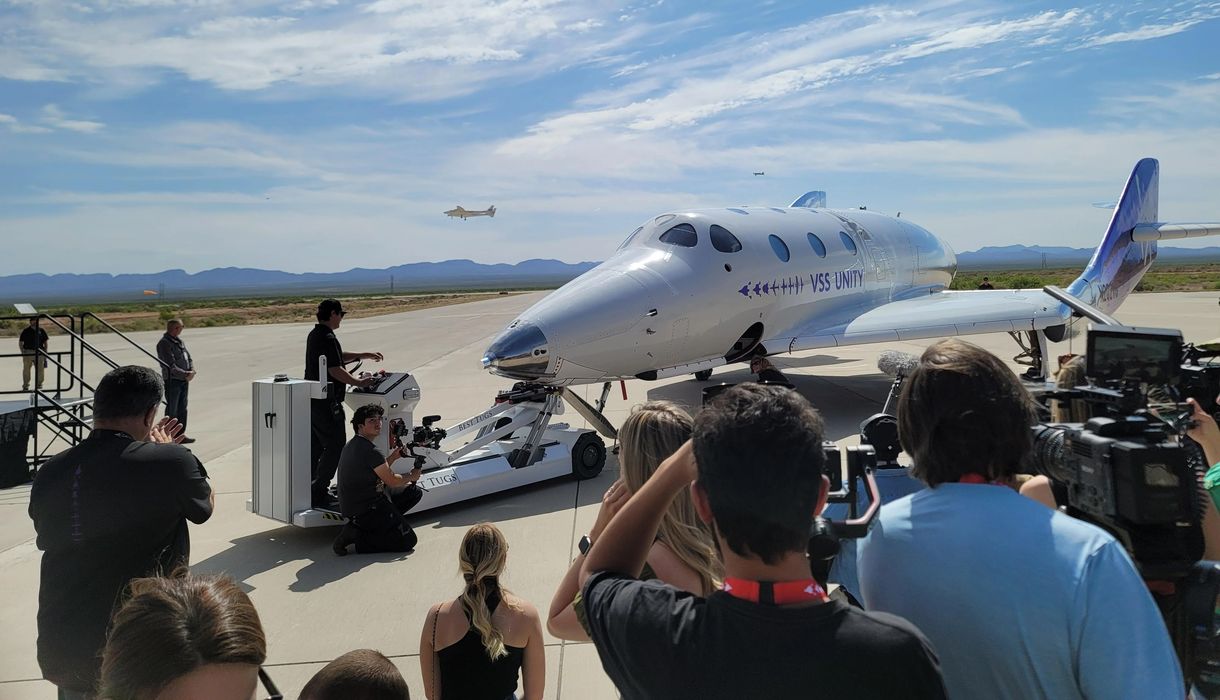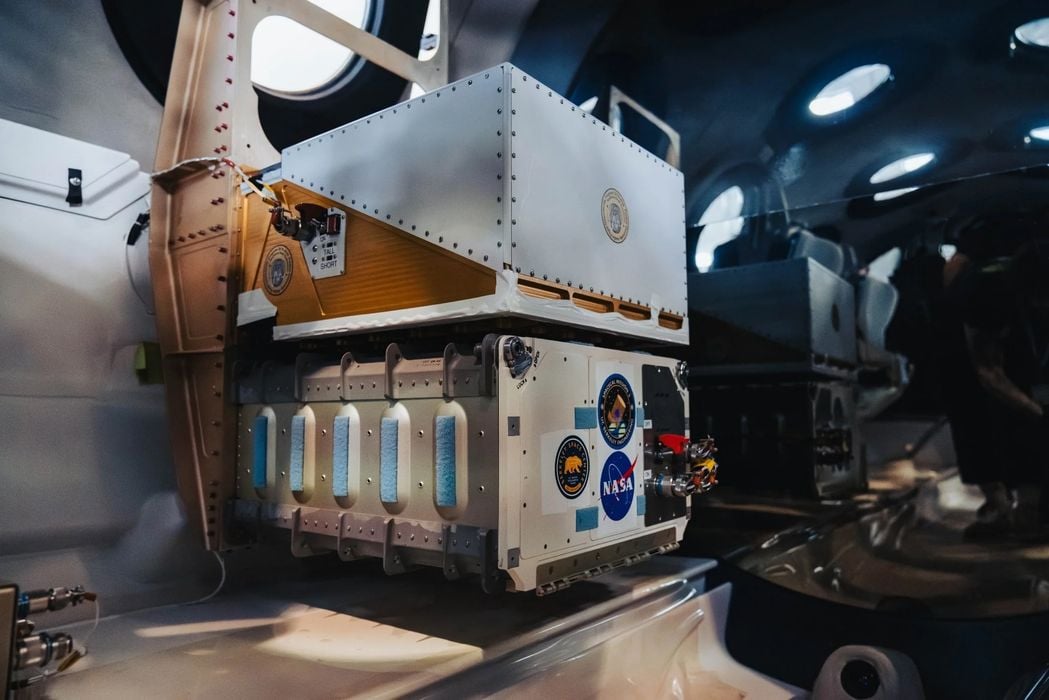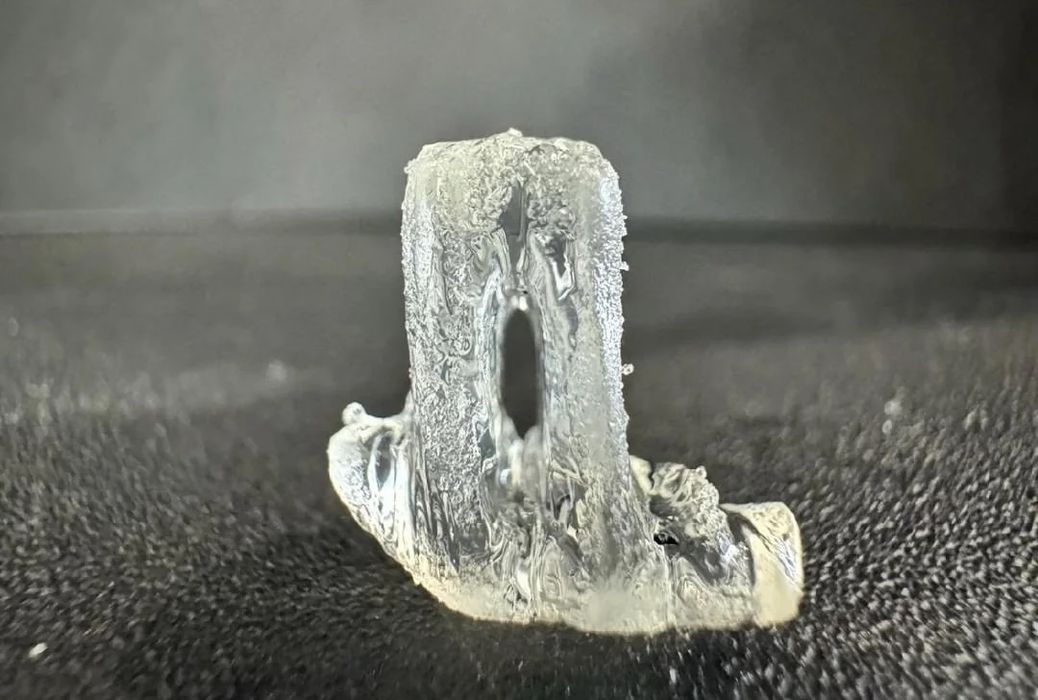
A report describes a NASA experiment to 3D print in space using a volumetric process.
Volumetric 3D printing is a very new approach to producing solid objects. It’s a resin process, but instead of printing layer by layer, it happens all at once: 2D light patterns are projected into a vat, which is typically rotating. The process is enormously faster than typical 3D printing process, with objects being completed in minutes or even seconds.
3D printing in a weightless environment was first attempted some months ago in a NASA experiment. That experiment involved hoisting the printer on a specially designed aircraft that follows a parabolic flight path to produce a few seconds of weightlessness.
Evidently this test succeeded, as a report on Reddit describes a similar test on the final flight of Virgin Galactic’s VSS Unity spacecraft a few days ago.

VSS Unity is not designed to get into orbit; instead it “merely” reaches space and comes back down. This produces several minutes of weightlessness and outstanding views of planet Earth for passengers.
Apparently the flight also included the volumetric printer, and the experiment was to 3D print a #3DBenchy. Here you can see the results of the test, which isn’t particularly good.

However, there’s an explanation. In the Reddit thread user midgetking15, who seems to be involved in the project, explained:
“There was some chemical incompatibility that we were not able to correct preflight that made the projection poor that we use to print, we can do a lot finer detail on Earth with other setups. We will just have to fly it to space a 2nd time ;)”
This is an interesting experiment because volumetric 3D printing is one of the processes that should be able to take place in a weightless environment.
Imagine attempting to 3D print in space using, say a typical desktop MSLA resin 3D printer. The resin, which normally is held by gravity in the resin tank, would float all over. Not good, especially with toxic resin.
An even worse scenario takes place with powder-based 3D printing. Powder systems, such as SLS or LBPF, require gravity to hold the powder flat to form the print surface. That’s not happening when in orbit.
Because of weightlessness, only DED and FFF-style 3D printing processes have been attempted thus far. However, this experiment shows that it could very well be possible to print in resin using a volumetric process.
Via Reddit
